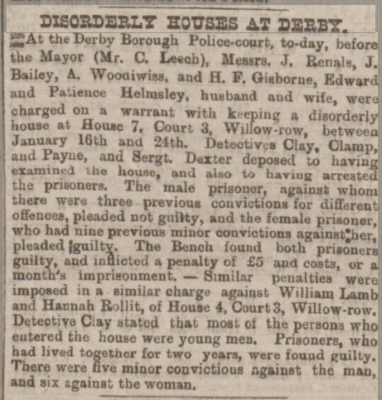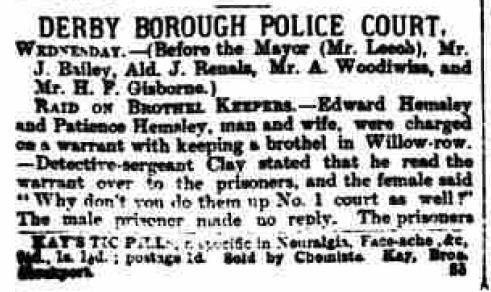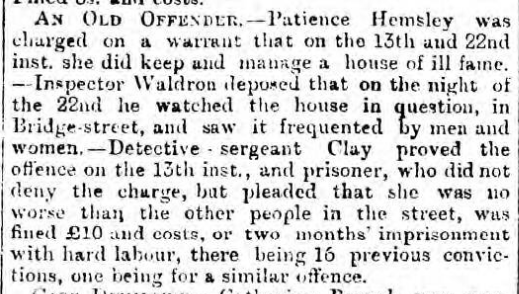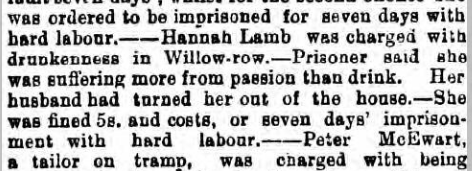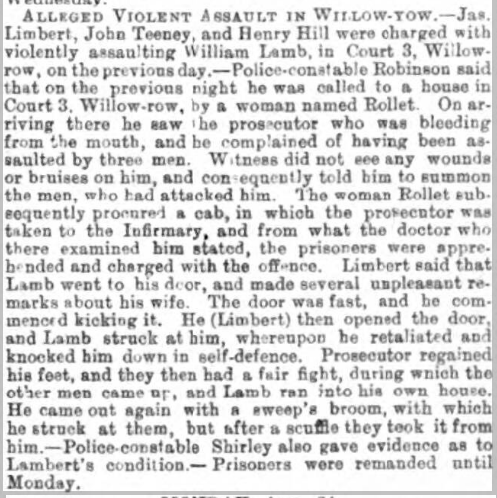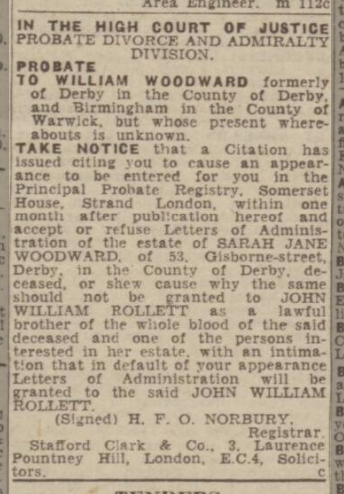A while ago, while researching the Lamb family, I stumbled across a few newspaper articles regarding the trial and conviction of a family member for bigamy in 1947. Obviously I needed to know more…
Reuben Lamb and Kathleen Morgan had married at a young age – Reuben was just 17, Kathleen 19. After about a year of marriage, they were recorded living with Kathleen’s father at 30 Bradshaw Street, Derby in the 1939 register. (Note: For some reason, Kathleen was crossed out but added to a later page with the same information.)

The reports are a little unclear, but at some point Reuben joined the army and eventually found himself in Nottingham. It was here, in 1945, that Reuben met canteen worker, Mary Evans Mitchell who worked at a Navy, Army and Airforce Institute canteen located near Nottingham Castle. The NAAFI was established in 1920 to ‘run the recreational establishments needed by the Armed Forces, and to sell goods to servicemen and their families (source: NAAFI.co.uk). Reuben told Mary that his first wife “had been killed in an air raid, and that his marriage had in any case been a great mistake.” (Nottingham Journal, 19 February 1947, p3, c3). Reuben and Mary grew ‘fond’ of each other – so much so that Reuben moved in with Mary at her sister’s home and they married in February the next year (1946).
“She was everything that the other one wasn’t…”
Less than a year later, the new life Reuben had built for himself came crashing down. Reuben went to Derby to see Kathleen ‘in response to a telegram’. While there, he may have let something slip, which led to the first wife arriving in Mansfield on the 21st of January to reveal the truth to poor Mary.
Reuben told the Nottingham Assizes: “after he had deceived her [Mary] for so long, he simply had not the courage to tell her the truth when it actually came to the point of marrying her”. Kathleen claimed Reuben ‘thrashed’ her; Reuben denied this and claimed Kathleen had been ‘associating’ with other men. Regardless, the judge found that Reuben’s actions had been quite deliberate and sentenced him to three months in prison.
It’s impossible not to feel for Mary who, I was to find, was already no stranger to heartbreak…
(Story to be continued in Part Two)
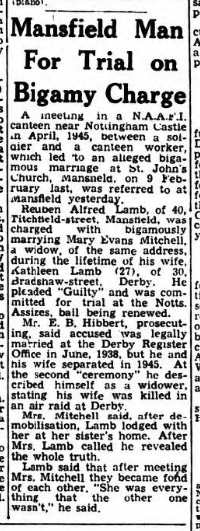
Mansfield Man For Trial on Bigamy Charge
A meeting in a N.A.A.F.I. canteen near Nottingham Castle in April, 1945, between a soldier and a canteen worker, which led to an alleged bigamous marriage at St. John’s Church, Mansfield, on 9 February last, was referred to at Mansfield yesterday.
Reuben Alfred Lamb, of 40, Titchfield-street, Mansfield, was charged with bigamously marrying Mary Evans Mitchell, a widow, of the same address, during the lifetime of his wife, Kathleen Lamb (27), of 30, Bradshaw-street, Derby. He pleaded “Guilty” and was committed for trial at the Notts. Assizes, bail being renewed.
Mr. E. B. Hibbert, prosecuting, said accused was legally married at the Derby Register Office in June, 1938, but he and his wife separated in 1945. At the second “ceremony” he described himself as a widower, stating his wife was killed in an air raid at Derby.
Mrs. Mitchell said, after demobilisation, Lamb lodged with her at her sister’s home. After Mrs. Lamb called he revealed the whole truth.
Lamb said that after meeting Mrs. Mitchell they became fond of each other. “She was everything that the other one wasn’t,” he said.
(Nottingham Journal, 30 January 1947, p4, c7)

THREE MONTHS FOR BIGAMY
Sequel To Unhappy Marriage
Sentence of three months’ imprisonment was passed at the Notts. Assizes, to-day, on Reuben Alfred Lamb, 25, a grinder, who was committed from Mansfield on a charge of bigamy at Mansfield on February 9th, 1946.
“There is no doubt that what you did you did quite deliberately,” said Mr. Justice Morris in passing sentence.
Mr. Nigel Robinson, prosecuting, said the legal marriage was in 1938 at Derby, accused being 17 and his wife 19. He served in the army and on his discharge had a quarrel with his wife and left to lodge with a widow, Mrs. Mitchell, a N.A.A.F.I. worker whom he illegally married.
Lamb later went to see his wife in response to a telegram, and subsequently was alleged to have thrashed her.
Mr. W. A. Simes, defending, explained, in interrogation, that accused’s legal wife had been associating with other men. It had been an unhappy marriage. Lamb denied thrashing his wife.
(Nottingham Evening Post, 18 February 1947, p4, c1)

Said Wife Was Killed in Raid
Bigamy Sentence at Notts. Assizes
SEVERAL cases of alleged bigamy were dealt with by Mr. Justice Morris at Notts Assizes yesterday.
Reuben Alfred Lamb (25), a Mansfield grinder, who admitted bigamously marrying a young Mansfield widow on 9 February last year, was sent to prison for three months.
The widow was Mrs. Mary Evans Mitchell, of Mansfield, and Lamb was accused of marrying her while his legal wife, Kathleen, was still alive.
N.A.A.F.I. MEETING
For the prosecution Mr. Nigel Robinson stated that Mrs. Mitchell was a widow whom defendant met while she was working in the N.A.A.F.I. at Nottingham.
“He deceived Mrs. Mitchell by telling her that he was a widower; that his wife had been killed in an air raid, and that his marriage had in any case been a great mistake.”
THRASHED HER
Mr. Robinson added that on 21 January this year the legal wife went to Mansfield to see Lamb. She told Mrs. Mitchell that he was already married, and Lamb thereupon thrashed her.
Lamb was defended by Mr. W. A. Sime, who stated that the legal marriage had been most unhappy Lamb had already taken steps for divorce, and proceedings were still going on
He and Mrs. Mitchell were very fond of each other and after he had deceived her for so long, he simply had not the courage to tell her the truth when it actually came to the point of marrying her
(Nottingham Journal, 19 February 1947, p3, c3)

